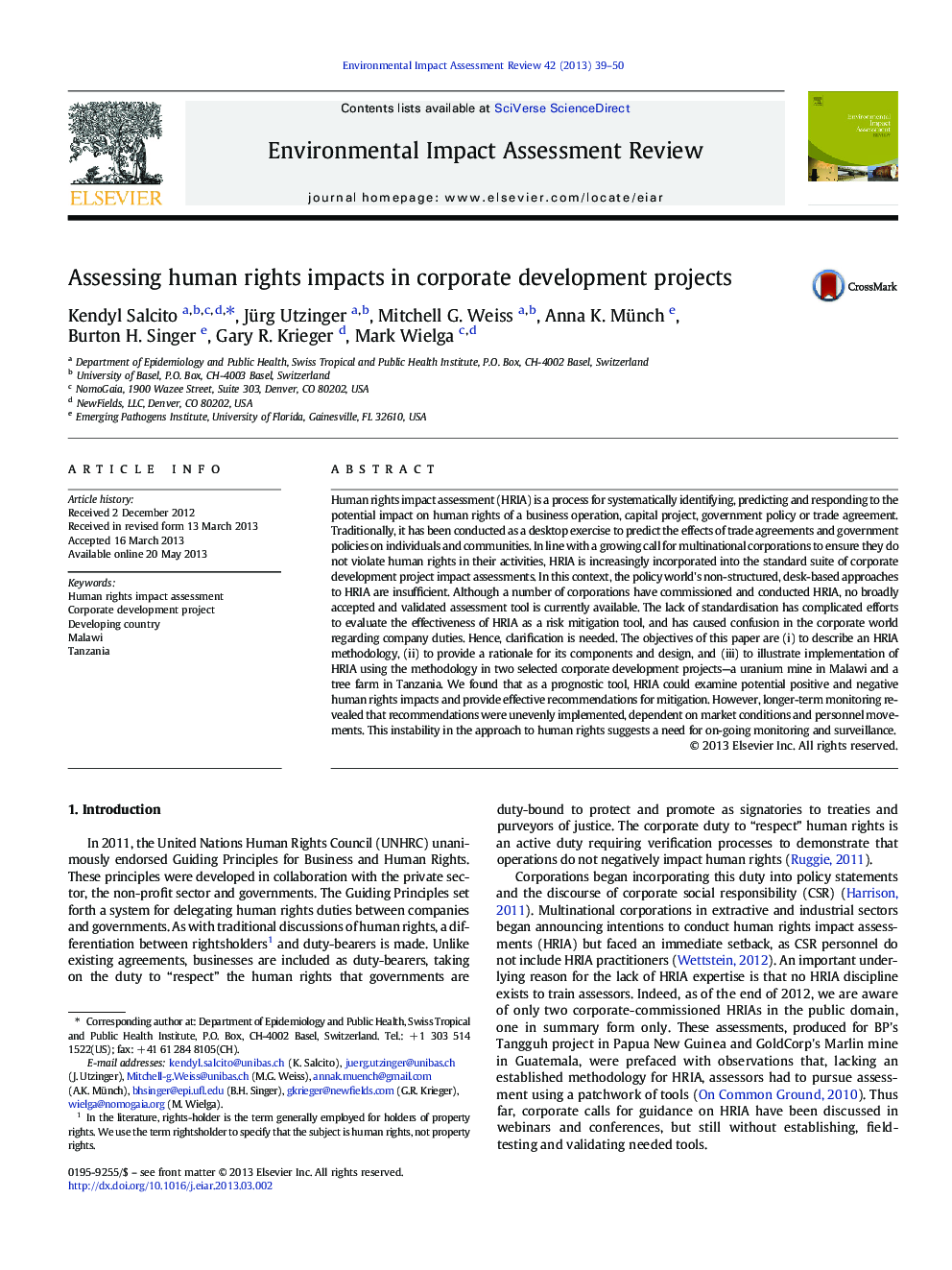| Article ID | Journal | Published Year | Pages | File Type |
|---|---|---|---|---|
| 1052797 | Environmental Impact Assessment Review | 2013 | 12 Pages |
•We developed a novel methodology for corporate human rights impact assessment.•We piloted the methodology on two corporate projects—a mine and a plantation.•Human rights impact assessment exposed impacts not foreseen in ESIA.•Corporations adopted the majority of findings, but not necessarily immediately.•Methodological advancements are expected for monitoring processes.
Human rights impact assessment (HRIA) is a process for systematically identifying, predicting and responding to the potential impact on human rights of a business operation, capital project, government policy or trade agreement. Traditionally, it has been conducted as a desktop exercise to predict the effects of trade agreements and government policies on individuals and communities. In line with a growing call for multinational corporations to ensure they do not violate human rights in their activities, HRIA is increasingly incorporated into the standard suite of corporate development project impact assessments. In this context, the policy world's non-structured, desk-based approaches to HRIA are insufficient. Although a number of corporations have commissioned and conducted HRIA, no broadly accepted and validated assessment tool is currently available. The lack of standardisation has complicated efforts to evaluate the effectiveness of HRIA as a risk mitigation tool, and has caused confusion in the corporate world regarding company duties. Hence, clarification is needed. The objectives of this paper are (i) to describe an HRIA methodology, (ii) to provide a rationale for its components and design, and (iii) to illustrate implementation of HRIA using the methodology in two selected corporate development projects—a uranium mine in Malawi and a tree farm in Tanzania. We found that as a prognostic tool, HRIA could examine potential positive and negative human rights impacts and provide effective recommendations for mitigation. However, longer-term monitoring revealed that recommendations were unevenly implemented, dependent on market conditions and personnel movements. This instability in the approach to human rights suggests a need for on-going monitoring and surveillance.
